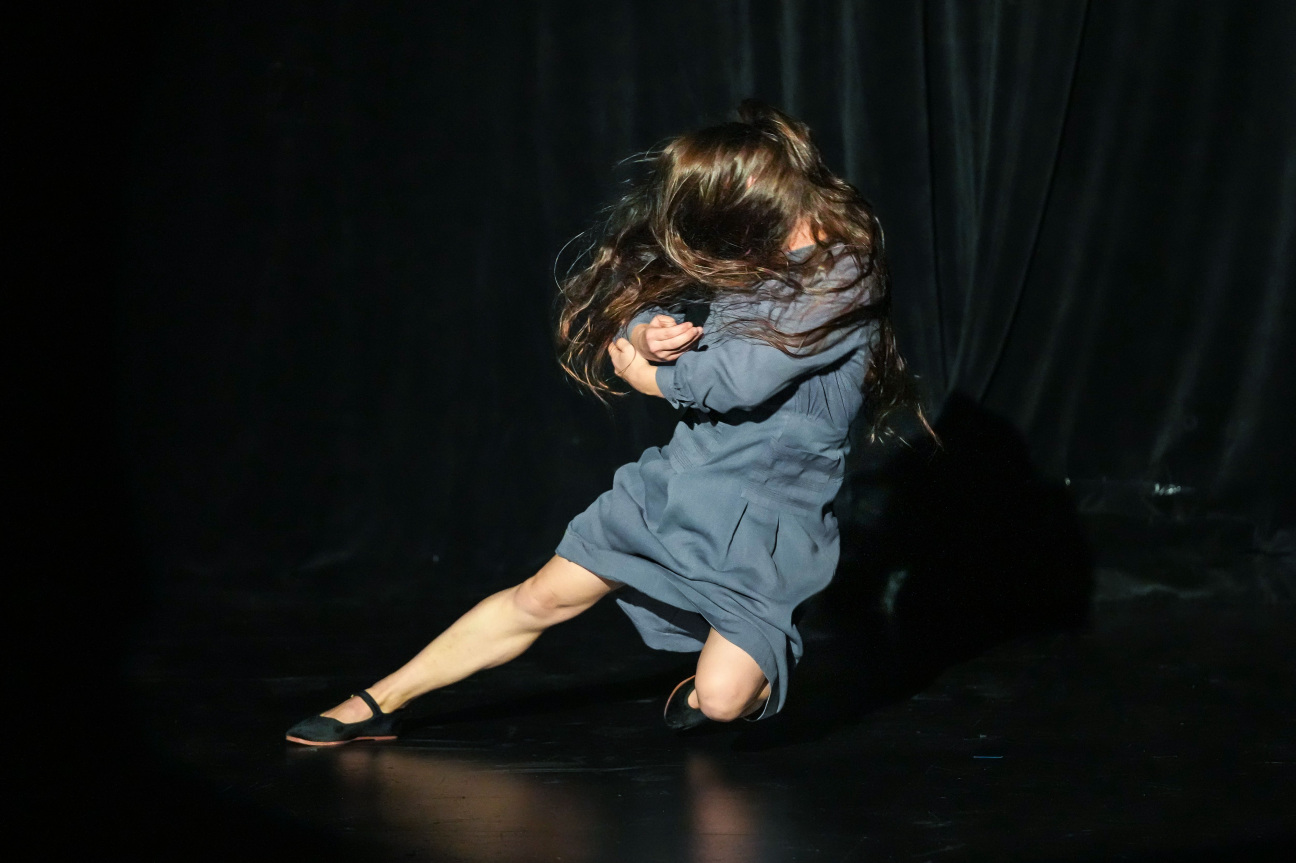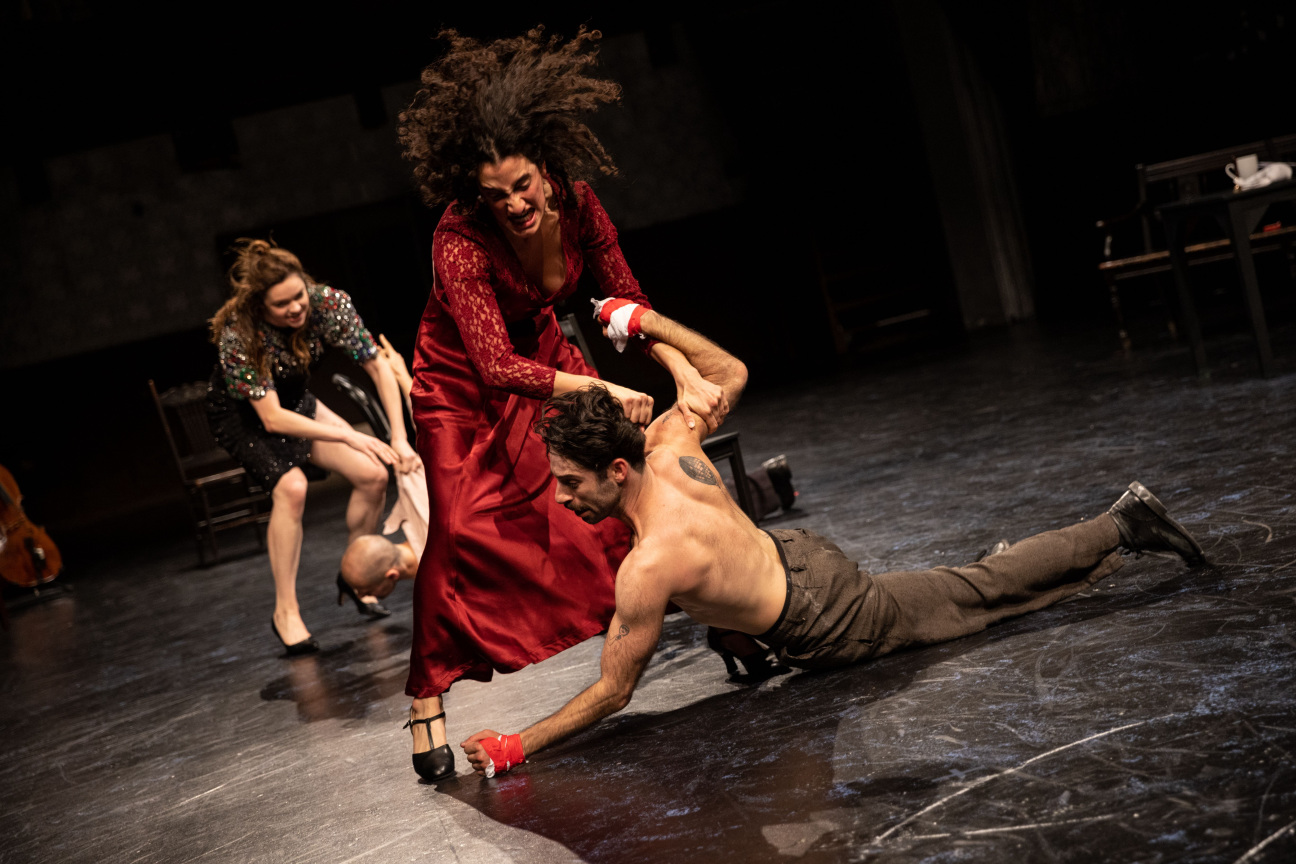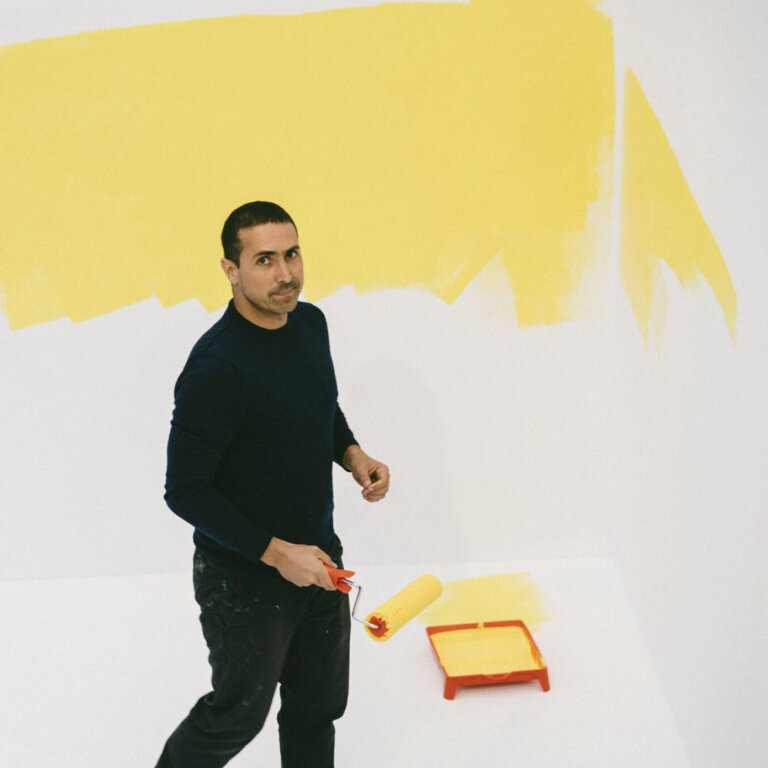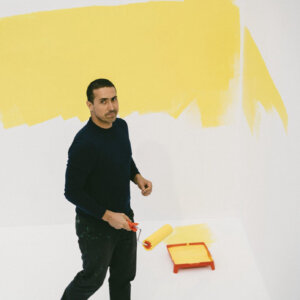
What if the fourth wall were abolished and the stage were allowed to spill? What would unrestrained fiction do to us, actors and audience? Drown us, or leave us beached on the shore? This is the premise of Broken Theater, an American Modern Opera Company production directed by Bobbi Jene Smith. As I took my seat at La MaMa theater in the East Village, I immediately felt the pull of the show, a loose adaptation of Shakespeare’s The Taming of the Shrew. My boyfriend sat us directly behind the girl he’d once dumped me for, a D-list socialite, who went on to dump him at her family home. We were the guests of our mutual friend, hers and mine, the enigmatic architect and artist Adam Charlap Hyman, who’d warned me about her presence in the bathroom line. I listen to everything Hyman says very carefully, as anyone should. The show, it turns out, was perfect for my seasickness. It, too, was conceived in a storm.
Broken Theater was born in upstate New York at the height of the pandemic, the brainchild of a troupe of dancers, musicians, and actors who weren’t sure they’d ever get to do those things again. It became a flotation device in an ocean of uncertainty. They each assigned themselves an archetype, one that embodied their fears, and proceeded to act out their anxieties. In some ways, Broken Theater is still in rehearsal—a play that, during every performance, might fall apart. It is this threat of total undoing that drives the narrative. “When we started making this show, we were asking ourselves, ‘What does this form of expression mean to us without the final product?’ and ‘How is the rehearsal a performance in itself?’” says Smith. “When you get to play a part, you all of a sudden have more permission to be yourself. Throughout the piece, we've all found different freedoms.”

The path to liberation is, not surprisingly, a violent one. Its brutal nature is clear from the first moments of the show and barrels through the romance, humor, and sadness like fat through a steak. “It’s a big inquiry for me: how to show that desperate feeling that we all have in the body,” says Smith. “Often it comes out in fear and through violence. Not that I'm a big advocate for violence, but we see violence all around us and become a bit numb to it.”
In Broken Theater, Smith and the cast make it impossible to ignore the boiling up of uncertainty and the way it moves through us as individuals. There is slapping, kicking, spanking, stabbing, and smashing from the jump, mixed in with the kissing and collapsing. None of this action is confined to the stage. It leaks into the back of the house, the orchestra, and even over the seats. In its wake, transformations are unavoidable. Musicians become actors. Actors become musicians. And it is these individual epiphanies that provide the fireworks. As actor Mouna Soualem, whose role approximates Shakespeare’s shrew, Katherine, tells me: “The first days of practice were very challenging. I'm not a trained dancer at all. When Bobbi [Jene Smith] gave us a prompt, I looked at all of those amazing dancers who just stood up and started to work the space and I thought, Oh my God, what am I going to do? Usually, my first interaction in the theater is with the script. I had to really think, What could I put in the room? What does it mean to perform? We all had to choose our archetypes. I chose the actress, and so I had to ask myself, as an actress, 'If I were to go too far in this scene, if I were to lose myself in it, what would I leave behind me? What would I gain?' Those things were on my mind when we were creating the show and they are still there. We are still searching around those archetypes we chose and asking, ‘What am I willing to lose today? What am I willing to leave behind me?’”
Soualem wasn’t the only one experiencing a personal breakthrough. Violinist Keir GoGwilt found himself unexpectedly jumping into a scene to bring a moment of high tension to a jarring climax. “When I come in and slam my violin on the table, the first time it happened, I was improvising,” says GoGwilt. “Everybody in the cast pushes you to enter different emotional zones and fully commit to them. I was compelled to break something.”

Dancer and actor Jesse Kovarsky shattered something else while developing the show: his feelings of inadequacy. “I was questioning my identity as a performer, asking myself questions like, ‘Will I ever get to do this again?’” he recalls. “I decided that was where I would build this character. And I discovered that I've been trying to achieve this essence of enoughness in my life. This role is a representation of enoughness for me, because a lot of the show I'm just sitting there waiting. I learned waiting can be enough.”
As I watched Broken Theater unfold, all of these emotions felt almost too accessible. Waves of anxiety, love, and bitterness crashed over me. I thought it was all going to fall apart. It never did. The stakes among the creators are high, personal but shared. Broken Theater is a gift that the actors, musicians, and dancers gave each other under the watchful eye of Smith, who for the past decade has forged a reputation for creating rich tents for others. Watching Broken Theater, I felt wrung out by some ancient ocean. Catharsis is a rare medicine. I swam out of the theater bathed in it—smiling like a maniac baptized in love.






 in your life?
in your life?

